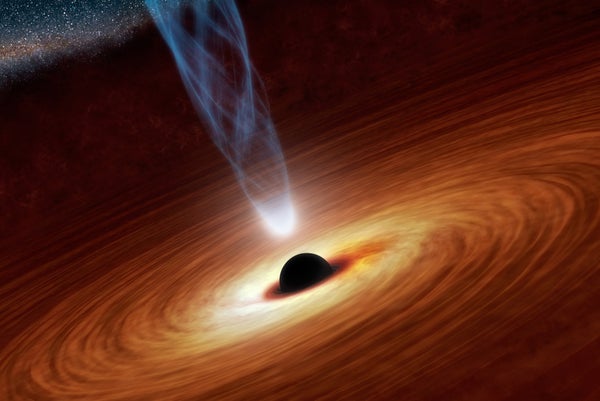In stories about the universe gravity plays a starring role. It is the force that best explains not only the motions of the planets, stars and galaxies, but also their origins and evolution—how order coalesced from the chaos of the primordial cosmos.
Yet for all of gravity’s importance, physicists’ understanding of it is in many respects woefully incomplete. After famously watching an apple fall from a tree, Isaac Newton recognized gravity as a fundamental force acting on all things, yet he failed to explain its origins. Centuries later Albert Einstein would explain the phenomenon as a distortion of the fabric of reality itself, a view perhaps best summarized later by the physicist John Wheeler: “Spacetime tells matter how to move; matter tells spacetime how to curve.” Like Newton’s definition, Einstein’s has its shortcomings—breaking down in the quantum realm where the relationships between the building blocks of matter and spacetime become vexingly probabilistic.
What’s more, neither Newton’s nor Einstein’s theories fully explain the mysterious fact that the gravitational hand of unseen dark matter holds together most of the “stuff” in the universe or that the entire cosmos is undergoing an accelerating expansion driven by a seemingly antigravitational force called dark energy. These and other cracks in the great edifice of physics are increasingly compelling theorists to reconsider what gravity might be and how it works. What if, instead of being the main character, gravity is only a bit player—a footnote?
On supporting science journalism
If you're enjoying this article, consider supporting our award-winning journalism by subscribing. By purchasing a subscription you are helping to ensure the future of impactful stories about the discoveries and ideas shaping our world today.
Erik Verlinde, a Dutch cosmologist at the University of Amsterdam, is at the forefront of a new wave of thinking in theoretical physics that aims to revise a Newtonian universe with a quantum pen. According to his theories, gravity is not so much a fundamental force but rather a by-product of a universe weaved onto a deeper scaffolding of quantum interactions and thermodynamics. In Verlinde’s formulation dark energy arises naturally from gravity’s emergence, and dark matter is an illusion produced by our misunderstanding of these effects.
Join Erik Verlinde tonight at the Perimeter Institute for Theoretical Physics in Ontario for a bold reappraisal of gravity and dark matter that could produce a more complete draft of the story of the universe. The talk, “A new view on gravity and the dark side of the cosmos” is part of Perimeter’s public lecture series and will take place at 7 P.M. Eastern time. Online viewers can participate in the discussion by tweeting to @Perimeter using the #piLIVE hashtag.
